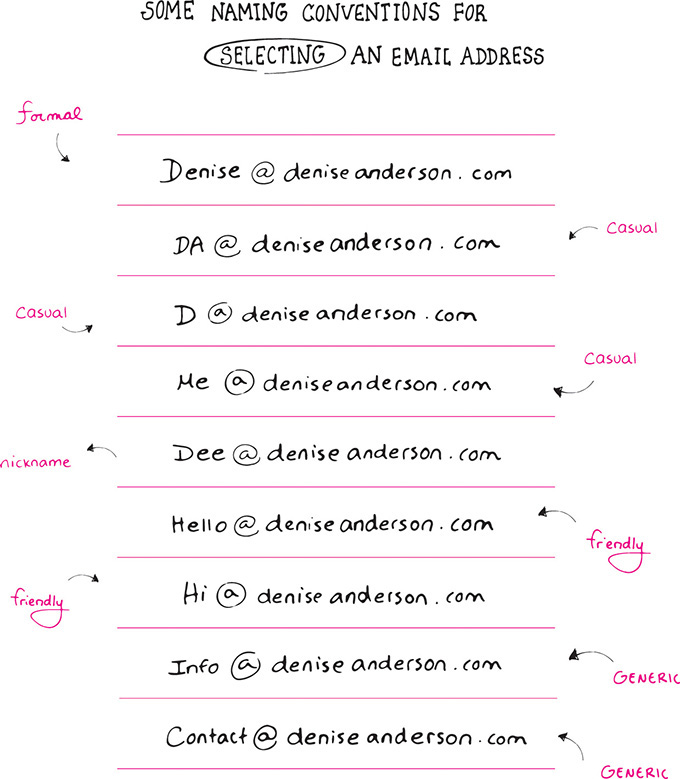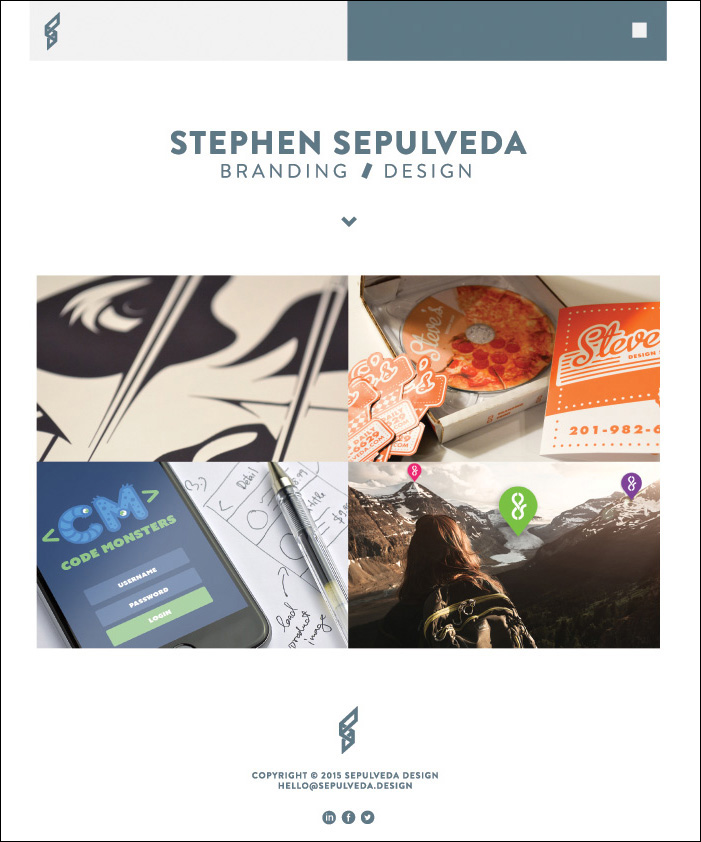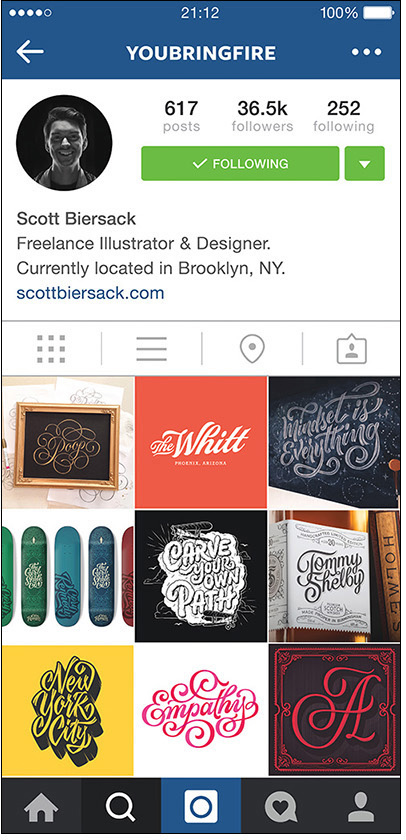4. Promote Your Brand
Creating an integrated brand campaign.
Everyone’s comfort level for putting themselves out in the world to get noticed is different (although I tend to think that younger people, raised in the age of selfies and social media, are less self-conscious about self-promotion than other generations). Personally, I’ve never liked vying for attention, and to this day, I find the tasks related to self-promotion—cold calling, meet-and-greeting, and sharing my work and myself with strangers and people I’ve only just met—downright frightening. When I had my design business, I paid a full-time salesperson to initiate contact with potential clients. It’s not that I lack self-confidence, but quite frankly, the idea of being rejected hurts my feelings.
When I was single and looking for someone to share my life with, my good friend Janice told me, “Love will not walk up and knock on your door.” Conceding she might have a point, I started networking. I asked my friends and colleagues to set me up with people they knew, and after some awkward phone calls, bad dinners, and one minor stalking incident, a close friend introduced me to my soon-to-be spouse. Janice was right. I never would have found who I was looking for if I hadn’t taken control of my search.
Pursuing a job should be like seeking out a love relationship. You have to know what your goal is, have a strategy to reach that goal, and then execute your plan. It’s great to be wonderful, but if no one else knows your greatness, how will you ever get a design job?

My former student, Connor Paglia (who you met in Chapter 3) grew up playing baseball. He played all through college, until his senior year when he left the team to concentrate on finishing his degree in graphic design. As a student, Conner was disciplined, hardworking, and a team player (skills he learned, or at least refined, playing baseball). He was also generous, frequently sharing his design and production skills with anyone in class who needed help. His dream job was to work for Major League Baseball.
Just before he graduated, Connor read that the MLB was building a product team to work on third-party clients (consumer brands, not just baseball projects). Connor was well qualified for the position, but his goal was just to get an interview, to get in front of someone so he could demonstrate his devotion for the game and commitment to doing the work. He was confident that he would be a good fit because of the skills he had learned on the field, his branding and mobile design knowledge, and the professional experience he had earned through freelancing and design internships. Connor hadn’t even graduated yet, but he knew he had to take the chance and apply, because if he didn’t, his odds of landing the interview (and the job) were zero.
It’s not uncommon to want to shy away from exposing your creative efforts and yourself to potential criticism, especially from employers as huge as the MLB. But I can assure you that when you call upon the kind of courage that has brought you this far (getting through design school is no easy feat) and push past your fear of rejection (to reach your true love or job of your dreams), you will put yourself in a position to speak with confidence about your work and its value.
Connor got his interview, and as you know, he got the job with Major League Baseball. He did it by communicating his ideas, experience, and skills, as well as work ethic and dedication. His website and his other touchpoints communicated the type of thinking, aesthetics, and skills that he could offer. He had a brand strategy, and he promoted himself.
Remember: you only need to connect with one nice person (and there are plenty in our industry) who can give you a break in the form of a job, advice, or your next lead. This is no time to hold back or succumb to feeling intimidated. Devise a plan, develop your message, design the touchpoints, identify the audience you want to reach, and then promote yourself through the channels they use for communication. Reach, don’t wait, for your opportunity, whether it’s a great design job, networking with other professionals, or making a name for yourself in the public eye.
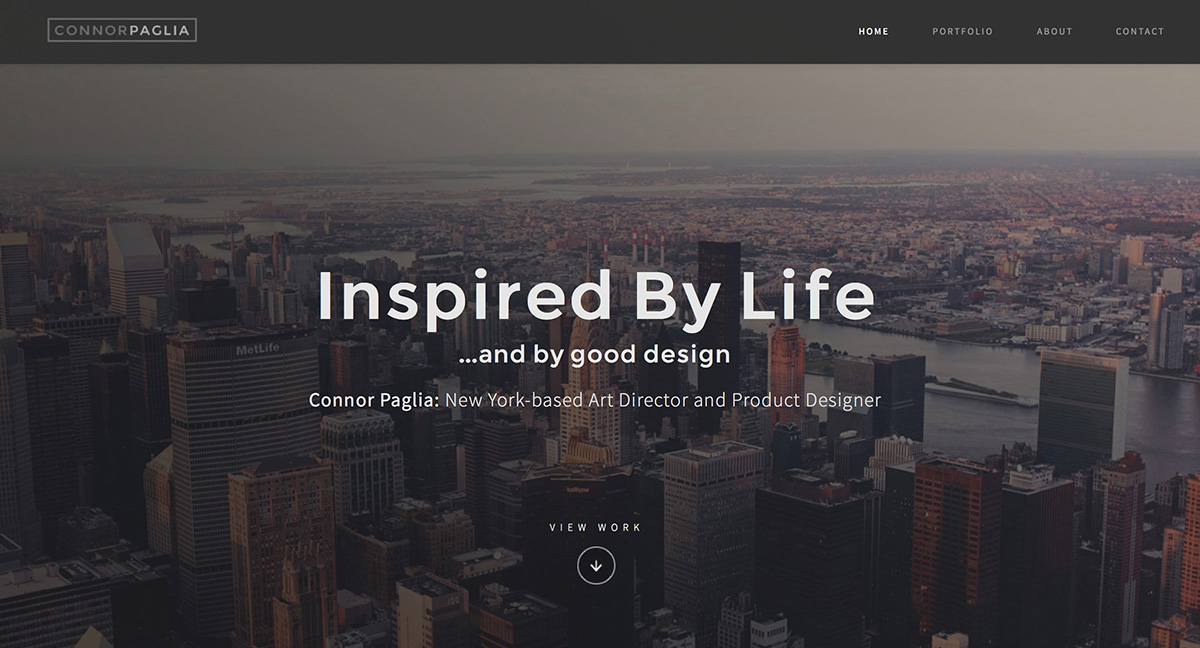
Just as you wouldn’t search for true love without a plan (going to a bar to meet someone is basic, but it’s still a plan), you have to think through and commit to a search process that you can execute. This effort has two objectives: to gain attention for your capabilities and to create an emotional connection to your target audience. You do this by showing up where your audience is most likely to hang out, with a consistent message about yourself and your brand. The more they see your brand, the more they will grow to trust you and buy into your brand story, and the less likely they are to be dismissive when you approach them for a job interview.
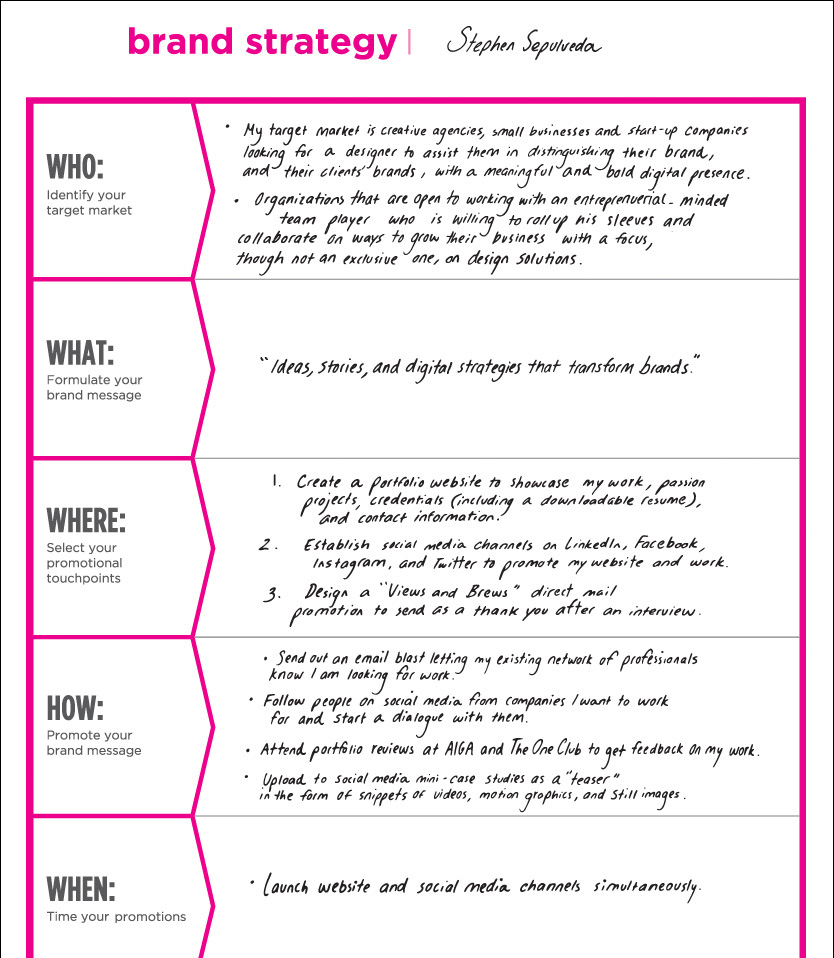
Write Your Brand Strategy
Per entrepreneur.com’s Small Business Encyclopedia on Branding, a brand strategy is “how, what, where, when, and to whom you plan on communicating and delivering on your brand messages.” Everything you show, say, or do (or don’t do) communicates something about your personal brand. For example, consider the Dos Equis man (born from a beer promotion of the same name). Many admire him for his air of mystery, women adore him, and he travels the world in style. His tagline (which would be his brand promise if he conducted his own personal assessment and analysis) says he is the “most interesting man in the world.” His brand message is broadcasted consistently and cohesively across multiple touchpoints in traditional advertising (TV, radio, and print), social media (Facebook, Twitter, and Instagram), and online (website and YouTube); I’ve included some of “his” links on my Pinterest page: pinterest.com/ProfessorDMA/personal-brand-promo/. Dos Equis leverages many of these brand channels by developing personalized content to communicate his story. Take some time to think about how you will promote yourself by developing, maintaining, and leveraging what you’ve already learned and expressed about your brand. Use the downloadable worksheet found at the link on the previous page, or write your answers on a piece of paper. You’re putting together a plan to communicate and deliver your brand message.
Who
Identify your target market.
You’ve already done some preliminary research, and your creative brief identifies where you want to be employed. Now you have to drill down into the details. If your brief shows that you want to work at a digital design agency of 150-plus people, then you’ll have to identify those companies that fit the criteria; and start thinking about where they’re most likely to be located. The more details you have about your target audience, the better you can customize your promotion. Remember: establishing connections that will lead to work is not about how many people you reach; it’s about the quality and appropriateness of the audience you engage. For example, Margaret Grzymkowski (the feisty henna artist from Chapter 3) made, decorated, and personally delivered donuts, her business card, and a handwritten note to the owner of a company where she wanted to work. He responded promptly with an email saying he’d be in touch when a position opens up.
What
Formulate your brand message.
Your creative brief contains the information that will inform and inspire your brand message. Just as skiing, fighting bears, cooking burgers, and attempting to run for the U.S. presidency makes Mr. Dos Equis the “most interesting man in the world,” a unified message will communicate your unique value proposition clearly and consistently throughout all of your promotions. What is the one thing you want your target market to think about when they hear your name or see your visual identity? Set the mood. Develop a point of view. Stay true to your brand promise. Own who you are, and don’t be afraid to put it out there.

You can choose to do very little or as much as possible to get yourself noticed, but at minimum you’re going to need a website and a social media campaign to communicate and deliver your brand story. (You’ll learn more about both later in the chapter.) The world uses these online touchpoints to do business, and you should be using them, too. Conceptualizing and integrating a memorable campaign with today’s print and social media channels will help you stake out your territory, differentiate yourself from the competition, and demonstrate an air of confidence.

How
Promote your brand message.
There are many, many ways to communicate your brand message, but you have to use the applications, channels, and platforms that your target audience is most likely to use. For example, if you are a mobile app designer, use web and mobile prototyping software to create your app, and then insert a link into an email blast or post it on your social media channels. If you’re a pattern designer, let your audience experience your shapes, textures, and colors first-hand by printing designs on cards or fabric swatches and sending a packaged kit via direct mail. They are two very different approaches, but each is appropriate for reaching and resonating with its particular audience. Not every form of communication works for everyone, so choose wisely.

When
Time your promotions.
Think back to my analogy of finding true love. Do you share everything about yourself in that initial phone call, or do you hold a few things back to reveal when you’re on the first date? Likewise, your promotional plan might start with a trickling of key messages—some teasers or pings to gauge whether and how your audience will respond. Identify the date when all of your promotional touchpoints will be ready or in the pipeline to be completed. No matter what your promotion, schedule, or vehicle for delivery is, time your strategy and move the viewer from one channel to the next so they’ll have a comprehensive idea of what you have to offer. If you misstep and don’t deliver when you said you would, you can lose any trust you’ve built with your audience, and it could damage your brand.
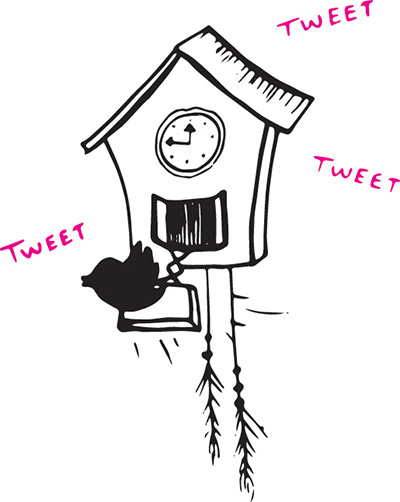
Develop a Personal Website
Outside of your logo, the most far-reaching and important brand identity touchpoint is your website, which is better known in our industry as your “online portfolio.” Your website is the one touchpoint that can be used as a promotional vehicle to connect you professionally to potential employers and clients throughout your design career. It can be updated easily and inexpensively with a new brand identity or portfolio projects. It advertises your design capabilities, software skills aptitude, and experience. More importantly, art directors and hiring agents use websites to prescreen candidates. In one afternoon, you can reach more people by sharing a link to your website than you could interviewing for a week.
This section is not about website design, but it should call your attention to the importance of having a website and how it relates to promoting your brand. You’ve almost certainly taken courses on basic web design. If you’re more advanced, you can use the information and my recommendations to align your strategy with ways to best promote your brand. The points I highlight are relevant to your brand strategy and the success of your website.

Select a domain name and professional email address
Your name is vital to your brand story, and an appropriate, corresponding domain name is just as important. Your website URL will be your professional handle throughout your career, so I recommend using your personal name as your domain so you can be found through an Internet search, and so no one else can snag it. Personal branding guru William Arruda says, “Buy your domain name. It’s like buying property. You want to own the property even if you’re not ready to build the house... If you have kids, buy their domain names. If you are going to have kids, don’t name them until you see if you can have their domain names.” Whatever domain you choose should be easy to remember and self-explanatory.
Use your domain name consistently across all of your touchpoints. URLs are generally inexpensive, and if you’re uncertain about what name you want, purchase several, and redirect each to your primary personal website. Register the name for as long as you can. Even if it’s only a year, make sure it’s set to auto-renew. This will ensure that no one can take it from you.
When I started this book, I did not own the domain name “DeniseAnderson.com” because it hadn’t been on the market for years. I wanted the “.com” because it is the most commonly-used commercial extension, and the one most people try first. As alternatives, I purchased variations of my name:
• DeniseAnderson.net,
• DeniseAnderson.me,
• DeniseAnderson.design, and
• DeniseMAnderson.com.
I want to own any domain name that’s closely associated with mine. I also bought Professor DMA.com (my social media handle). DeniseAnderson.com continued to elude me.
Writing this chapter, I did another quick Internet search and was delighted to discover that DeniseAnderson.com was available through a site that owns personal names. A five-minute email chat revealed that it was available, and I negotiated to buy it at less than 50 percent of the asking price. At the start of the negotiation, the vendor, unwilling to budge on price, claimed that more than 200 people had researched the name recently. I responded that the market for my name is small and that I conducted most of those searches. He lowered the price immediately. It never hurts to push back a little. If you are faced with a similar challenge, it can’t hurt to try to negotiate and acquire your name.
Options to consider when the domain name you want is not available:
• If the .com extension is not available, try .me, .design, .net, or another option that makes sense to your brand. For example, “JessicaHische.is” creatively uses the extension (for Iceland) to communicate attributes about her brand (“jessicahische.is/aseriousoversharer” and “jessicahische.is/thinkingthoughts”).
• Acquire your last name (Anderson.com) and use your first name as the email address ([email protected]).
• Use a middle initial (MaxBFriedman.com).
• Be conceptual (ILoveBobBuel.com).
• Add punctuation (Jiali-Ma.com).
• Insert the word “design” (AlexaDesign.co).
• Use a nickname (TheSamGarcia.com).
• If your name is difficult to spell, abbreviate it (Margaret Grzymkowski uses marggrz.com).
Organize your site
Organizing information (such as the website framework and content) into a well-built layout should always come before site design. Without structure, your website won’t flow correctly, and your visitors will have no clear path to the information they want. Organizing your site may seem like a tedious task, but you have to know at the outset what information you want to include. Preparation will help you put forward a strong brand, and the exercise will enhance what you can offer as a professional.
Things to consider when organizing your site:
• Page format (vertical or landscape) and layout grid (columns and margins)
• Navigation (names and style)
• Logo and name (size and placement)
• Typeface and color selection (use the selections and styles created for your brand identity in Chapter 3)
• Images (professional quality photos of your work and/or headshot; size and placement)
• Call to action (critical information about how to get in touch with you)
• Personal work (projects you are passionate about and create on your own time)
• Social media links (sites you use frequently or recommend and those that integrate your brand message)
• Copy (text for each section; your bio and work experience)
• Content (blog, videos, and other design elements)
• A platform that is easy to update and maintain

Identify the type of site you want
When you have identified and organized your information, think about the type of site that will reflect your brand and skill set, and select one that you can build. As a designer, you should have some base knowledge in website design (using Adobe Muse or Adobe Dreamweaver, for example) and programming (HTML, CSS, JavaScript, and HTML5, to name a few). You may already have a portfolio website on Behance or Squarespace or one that you’ve built yourself to display your work. There’s a difference between those and a professional site (or the site you are building now) that is part of a bigger brand strategy. For your purposes here, you’re creating something that will represent you professionally and serve as your online go-to location for the duration of your career.
As part of your website, consider blogging to promote your brand. A blog gives readers insights about who you are and what you value, and it gives people a reason to check back in from time to time. It can highlight a project or accomplishment that you are proud of or showcase your expertise. It is important to understand up front if blogging is part of your promotional strategy because you may need a site that includes a blogging feature, and it should be easy to use.
If you do decide that you want to blog, keep up with it. When you slack off or stop, people may perceive your brand unfavorably.
Whatever type of site you choose, it will reflect what you know about website design and programming and how to promote yourself to stand out from the crowd. Every semester, my colleague Ed Johnston, who teaches website design, creates a “cheat sheet”(standoutportfolio.com/website-cheatsheet) on how to identify and set up a simple website. Technology changes so quickly, he told me, it’s become essential to update it every semester. Webhosting, Creative Cloud, domain names—it can be confusing, but Ed’s chart walks you through some options of the type of sites that were available at the writing of this book.
Things to consider when identifying the type of site:
• Responsive (comparable web experience on all platforms)
• Template (i.e., Squarespace); hybrid (template, with some programming capabilities); or fully customized (i.e., unique design created in Adobe Muse)
• Number of pages (loads faster)
• Cost
• Features (blogging, email marketing, e-commerce)

Design your website
As websites and online design portfolios have become simpler to create, the volume of design portfolio sites on the Internet has escalated. With literally countless online portfolios to wade through, employers are challenged to find a designer who can effectively meet their needs. You have to think about what you can do to design a website that stands out in a crowded marketplace.
When I was building brand identities for a living, I applied a formula I called “Simplify, Humanize, and Energize.” I applied it to everything I designed. With this formula in mind, I was able to ensure that what I designed was meaningful, relevant, differentiating, flexible, cohesive and memorable, and that it would resonate and connect emotionally to the targeted audience and communicate the brand message. Refer to the creative brief and use the brand identity elements you created in Chapters 2 and 3 to align and connect your brand identity to your website design.
Simplify. It may be fun to design and program lots of fancy bells and whistles using motion graphics, videos, and music, but your audience will generally prefer you to get to the point. They’ll appreciate a clean, engaging design and navigation that makes sense. Your goal is to help visitors focus on the value of your brand and the content of your message, not on navigating through page after page of busy, blinking images and lengthy, self-indulgent blocks of text.
Humanize. You can’t see who’s viewing your website, but I can assure you, it’s a human being who wants to be treated with respect. So don’t look down on your viewers or insult their intelligence. Be personable and welcoming, just as you would if you were inviting them into your studio or home to take a look around, see your work, and stay for a while. Your site should encourage them to participate, have fun, and feel a bond with you. Employers and clients on the receiving side of the screen are really rooting for you, because they’re hoping that you’re the one who can help them achieve their goals and objectives (i.e., finding the right employee or freelancer to hire).
Energize. Evoke an emotional response from your audience. Use your brand colors in a new and exciting way or crop and arrange your images to create movement and fluidity through the site. Use original images. Be honest, thought-provoking, and relevant. Your copy should support and enhance your brand but shouldn’t overwhelm or tire your audience. Your site should grab and hold their attention, but too many images can be distracting. A savvy art director will recognize attempts to hide poor ideas or badly rendered designs behind a lot of frippery.
Other things to consider when designing your site:
• Validate that your website communicates the essence and message of your brand.
• Design the layout and organize content to make the website easy to navigate.
• Focus on the content and then the presentation.
• Confirm a clear hierarchy of information.
• Integrate typefaces, colors, and image styles from your mood board.
• Include personal projects, even those not design related, that reveal your other interests.
• Select and use quality images.
• Add a copyright signature to the bottom of each page; for example, “Copyright 2015 YourFirst LastName. All rights reserved.”
Test and launch the site
Many website browsers and electronic devices on the market can help you confirm that your site is functioning properly and that your design is proving to be the experience you want it to be. Interactivity is as critical as content. After you have examined all of the site’s functions, ask others to test-drive it. Better yet, have them visit the site in front of you so you can watch them navigate and see how they access information and how quickly. The time to modify and fix problems is before you launch.
What to consider when you’re testing your site:
• Check site functionality on Google Chrome, Mozilla Firefox, and Safari browsers.
• Review your website’s responsiveness on Macs and PCs, iPhones and Androids, tablets, and any of the most popular devices.
• Triple-check the accuracy of the content on your site, such as spelling, grammar, punctuation, text formatting, image correctness and sizes, and contact information. If text is not your strong suit, ask an acquaintance to proofread it for you.
• Assess how quickly your pages, images, and fonts load.
• Confirm that links for your email, resume, and social media are working properly.

Choose Your Social Media Platforms
Promoting and integrating your brand using social media is no longer optional. Platform preferences may differ from person to person, but most business people use sites like LinkedIn and Twitter to learn about their colleagues, associates, and potential new hires, whether their scrutiny is covert or obvious. I find that most young people today are agile and comfortable with all kinds of social media in their personal lives, but surprisingly few know how to use it to promote their professional brand. Some can even do damage because they confuse their professional contacts with friends and family by taking an approach that’s too casual. Social media is today’s venue for promoting your brand, exercising your skills, displaying your work, and revealing your personal interests. Just as you use it to build and maintain personal relationships, you can establish strong, lasting connections with other design professionals, colleagues, peers, and vendors. Pay attention to the trends, because what’s hot, and what’s not, is always changing.
Social media marketing touches every element of your brand from your conventional website and blog to the mobile web. Others can promote your brand for you by sharing, recommending, and re-tweeting something you’ve done or said. An art director who includes you as a connection on a social media site can catapult you instantly into the limelight. Robert Busch School of Design star Max Friedman is a good example. When he won the 2015 ADC All-Star award, numerous design leaders posted his information on dozens of social media channels. By the end of the day after the ceremony, Max had received a handful of email invitations (through the link on his website) to interview at top advertising firms in New York City. Social media is a powerful tool—in an instant, everyone can know your business.
As you think about your brand strategy, you should be considering which social media options will help you promote yourself the most effectively. Hina Paracha, a social media manager assisting start-ups with their social media marketing in the UK, talks about “The 5Cs of a Killer Social Media Strategy” (wersm.com/the-5-cs-of-a-killer-social-media-strategy/). In her blog post, Hina highlights five key ingredients that constitute a successful social media marketing strategy.

“The 5Cs of a Killer Social Media STRATEGY“
Content is king. Whatever you post on your social media pages reflects your brand. Keg-stand photos of you and your friends and pictures of cute animals may resonate with your buddies, but if you want to resonate with a professional audience, you should post content that will interest them and keep them coming back for more.
Consistency. Just as a cohesive brand builds trust with your audience, so will a uniform approach across all of your designated social media channels. Stay on top of changing trends, and keep experimenting: a post that’s exciting today may not be relevant tomorrow.
Conversation. Engage your fans and followers in meaningful conversations. Talking about what matters to your audience is the heart and soul of your social media strategy. When potential employers see that you care about what they care about, you establish an emotional bond that will predispose them to look favorably upon your brand.
Customer service. You may think you don’t have to worry about customer service before you’re employed as a designer, but your assumption would be incorrect. Long before you are working for someone, you are demonstrating the quality of service you can provide, and your actions speak volumes about you. Answer your emails, respond to tweets, and reply to LinkedIn requests promptly to send the message that you will be responsive to your employer and their clients when you’re hired.
Crisis management. How should you respond to someone who doesn’t like one of your projects or posts negative comments on your blog? Before it actually happens, you should have a plan to mitigate potential damage. I’ve seen hotel managers promptly respond to customer complaints on TripAdvisor; when I see the manager’s polite comeback, I can’t help but wonder if there was truly a problem with the establishment or if that guest just wanted to play troll.
Social media has changed my life; without Instagram, Dribbble, Twitter, and the Interner as a whole, I wouldn’t be where I am today. Being able to take a photo of my work and share it with thousands of people is just nuts, It’s even crazier that creative directors and art directors can see my work and potentially hire me. My experience with social media has been amazing and I owe my entire career to the wonderful people that follow and share my work.
–Scott Biersack
My colleague, Distinguished Professor Robin Landa, has authored 21 books about design, branding, advertising, creativity, drawing, and art. I asked her to share some pointers, and she generously provided these practical and educated insights about promoting your brand through social media:
Be authentic. Your voice (tone, word choices, and sentence/phrase structures) should be in sync with your personal brand, the copy on your website, and your bio and resume.
Be positive, not negative. When you’re building a personal brand, social media channels are not complaint forums but places for you to shine.
Be informed. Find the right audience. Use Twitter to follow recruiters, agencies, design studios, and corporate CCOs (chief communications officers) and CMOs (chief marketing officers). Connect with them on LinkedIn, too. Check out your competition—see what they’re doing and whom they’re following.
Promote a little/inform a lot. Share information that your audience will want to spend time with. Contribute to society, entertain, inform, and educate. If you talk only about yourself, people will tune out. If you inform, educate, and write interesting posts or post shareworthy imagery, people will pay attention. Remember, you are competing for attention with everything that’s online. Ask people to share your posts.
Showcase your passions outside of design or advertising. Whether you are passionate about music or in the midst of a personal project, share information and images (without violating any copyrights). Make sure to give proper credits when sharing others’ works, words, and posts.
Follow influencers—re-Tweet and re-post! If it’s interesting or enlightening to you, others will probably appreciate the share.
“Your designs fly to new heights when they are influenced by your life passions. The best forms of inspiration often come from outside the field of design.”
– John Weigrle

Connect to professionals, business owners, and B2B customers to generate leads and establish professional relationships. LinkedIn is the number-one networking site for professionals.
![]() Facebook
Facebook
Communicate your brand message in ways that connect, inform, and entertain. Leverage your social community by networking with the largest number of social media users.
![]() Twitter
Twitter
This “microblogging” channel allows users to post quick, short messages. It’s a powerful networking tool for building a loyal following and driving people to your website or blog.
![]() Instagram
Instagram
Share your photos, videos, and other visuals to a variety of social networking platforms like Twitter and Facebook.
![]() Google +
Google +
Reach out to early adopters, B2B professionals, and general social media users. Hangouts is a video chat service that you can use to connect with prospective employers. This platform integrates several social channels, including Google Profiles and Google Buzz, Circles, and Sparks.
![]() Vine
Vine
Post short videos that loop to communicate your brand and display work samples for your portfolio. Vine can help you advertise how you can be creative in a new way.
![]() Pinterest
Pinterest
Promote your brand story with visuals. Pinterest is great for personal projects. It is a strong driver of traffic to websites. The target audience is mostly women.
![]() Vimeo
Vimeo
This site, known for high-quality videos without distracting ads, allows you to share, discover, and be inspired. It’s used by professional creatives and filmmakers to showcase their work.
![]() YouTube
YouTube
Promote your brand by posting tutorials and other videos. Make a dynamic impression on your website by embedding YouTube videos.

